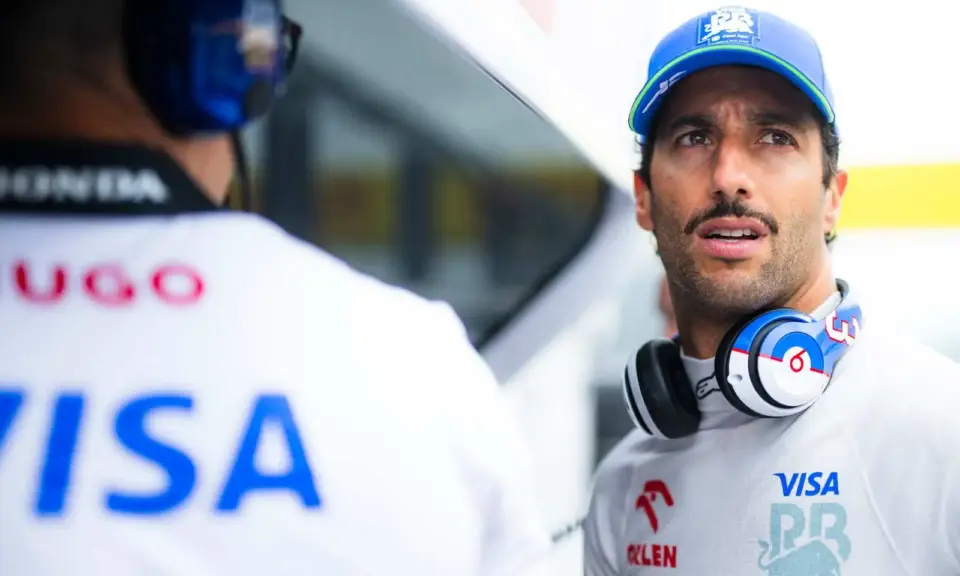George Russell faced unexpected twists after a strategic race at the Belgian Grand Prix. His standout one-stop strategy concluded with a disqualification, stirring conspiracy theories aplenty. Fans were quick to speculate about the reasons behind this, especially with claims about the weight of his Mercedes.
F1 analyst Karun Chandhok stepped in, offering a different perspective on the situation. He assured that Russell had no undue advantage from an underweight car. Instead, Chandhok highlighted a team oversight related to car weight calculations under specific conditions. This article delves into what really happened and dismantles the swirling rumors.
The Underweight Car Allegation
The Belgian Grand Prix was packed with excitement for George Russell and his team. His precision on a one-stop strategy was lauded by many, but it wasn’t long before rumors began to circulate. Speculation suggested his car was lighter than regulations allow, gaining an edge. Karun Chandhok dismissed these claims, emphasizing the importance of considering the car’s weight with fuel onboard.
Chandhok communicated through social media, clarifying that Russell’s car didn’t violate weight restrictions during the race. He explained that any advantage speculated came from a misunderstanding of how fuel weight was handled—a typical scenario in racing. Yet, not everyone was persuaded by this clarification, fueling further discussions.
An X user claimed there was still an advantage if the car was underweight. Chandhok replied, suggesting they misunderstood the process, as the car was always race-legal with fuel. The internet was abuzz with theories, but the facts were clear. Russell’s Mercedes never strayed from regulations while on track.
Impact of Tyre Degradation
Tyre degradation emerged as a crucial point in the narrative of Russell’s disqualification. Onlookers noticed substantial tire wear on the newly resurfaced Spa-Francorchamps track. This unexpected wear meant Russell’s tires had less weight, contributing significantly to his car’s overall weight reduction by the race’s end.
Chandhok addressed these concerns, pointing out that Russell’s long stint increased tread wear, creating lighter tires. The FIA’s decision to weigh the vehicle with an alternative tire set, to negate weight changes from rubber pick-up, was a standard protocol. This practice ensured fairness in assessing vehicle weight across varied conditions.
The lack of a cooldown lap for Russell further complicated perceptions. Without this lap, picking up rubber or debris that could add to the car’s weight wasn’t possible. Chandhok argued, though, that had any other set of tires been weighed, similar results would appear, debunking suggestions of intentional rule-bending.
The Role of FIA Regulations
FIA regulations are precise about vehicle weight, especially post-race. This precision aids in maintaining a level playing field among competitors, ensuring no team gains unfair advantages through technicalities.
Russell’s case was no different. The FIA’s adherence to rules required weighing cars without fuel to confirm dry weight compliance. The moment fuel, used as ballast, is removed, the car reveals its true dry weight—a critical measure in determining legality.
Chandhok was adamant; errors in fuel-weight management shouldn’t be equated with cheating. The disqualification stemmed not from willful misconduct but an oversight, emphasizing the importance of meticulous weight checks. His statements aimed to clarify and calm the racing community, eager for clear explanations.
Social Media’s Role in the Discourse
In the age of digital interaction, social media platforms buzzed with theories and debates post-race. Users on platforms, including X, were quick to share insights and critique the unfolding scenario from multiple angles.
Chandhok actively participated, addressing misconceptions directly. His engagement set a precedent for transparency in addressing racing controversies, providing a balanced view amid numerous theories.
His dialogue reinforced the importance of factual clarity, encouraging racing enthusiasts to understand the nuance of intricate racing regulations. In the process, misconceptions were corrected, and the factual narrative set straight.
Exploring the Fuel Ballast Concept
Fuel ballast is a crucial principle in car weight management during races. This technique uses fuel weight to balance the vehicle and maintain it within legal limits throughout the race.
Chandhok elaborated on how Russell’s vehicle maintained its weight predominantly through this method. By strategically managing fuel, the car stayed within the allowed weight during competition, dismissing accusations of cheating.
The removal of fuel post-race revealed the car’s non-compliant dry weight, a risk acknowledged within racing circles. This event served as a case study on the importance of strategic weight management and thorough post-race checks, preventing misunderstandings.
Dissecting the Lack of Cooldown Lap
The absence of a cooldown lap in Russell’s race strategy had unforeseen consequences. A post-race cooldown allows cars to pick up rubber and debris, incidentally adding weight before final measurement.
Russell’s strategy didn’t factor in this lap, contributing to weight issues. As Chandhok reiterated, the typical protocol of weighing allows for an alternative tire set, mitigating disparities in actual race conditions.
This misunderstanding gave rise to numerous theories questioning strategic tactics, yet in truth, it underscored the detailed intricacies required in high-level racing strategies.
Public Reaction and Media Coverage
The racing community responded intensely to the disqualification and associated discourse. Fans, analysts, and experts alike fervently discussed interpretations of the regulations and possible oversights involved in Russell’s case.
Media coverage amplified the event’s prominence, highlighting varying opinions across the board. The debates showcased the passionate interest within the racing community and the nuances involved in adhering to regulatory standards.
Despite differing views, Chandhok’s insights were crucial in steering narratives towards factual understanding. His explanations helped many appreciate the layers of strategic planning and regulation that define Formula 1 racing excellence.
Lessons from the Belgian GP Incident
The Belgian Grand Prix incident serves as an important reminder of the intricacies of Formula 1. Teams meticulously plan strategies, yet unforeseen challenges, such as tire wear or race conditions, demand quick adaptation and understanding of regulatory nuances.
Chandhok’s contributions demonstrated the significance of informed analysis and the role experienced voices play in maintaining integrity within sports. His dedication to fact-sharing benefited a wider audience seeking clarity amidst confusion.
Ultimately, the incident reinforced the complexity of F1 racing. It’s a sport where meticulous planning, clear regulations, and open communication converge, ensuring fair play and progressive innovation.
In the end, George Russell’s disqualification highlighted the fine margins in Formula 1 racing. The dialogue around it encouraged deeper insights into race strategies and regulations. It underscored the necessity for clear communication and understanding in high-stakes competitions.










